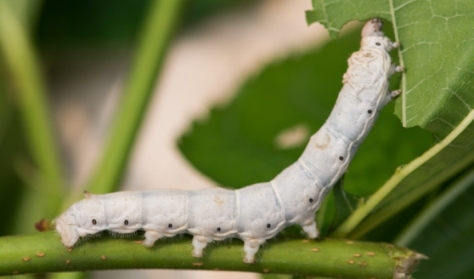[Short Notes – E&B] NCERT Class VII – Science – Fibre to Fabric – Chapter 3 – Part 2
Read complete book (must) at : NCERT Class VII – Science – Fibre to Fabric – Chapter 3
\/
\/
SILK
\/
Silk fibres are also animal fibres. Silkworms spin the ‘silk fibres’.
The rearing of silkworms for obtaining silk is called sericulture.
\/
Life history of silk moth
\/
The female silk moth lays eggs, from which hatch larvae which are called caterpillars or silkworms.
They grow in size and when the caterpillar is ready to enter the next stage of its life history called pupa, it first weaves a net to hold itself.
Then it swings its head from side to side in the form of the figure of eight (8).
During these movements of the head, the caterpillar secretes fibre made of a protein which hardens on exposure to
air and becomes silk fibre.
Soon the caterpillar completely covers itself by silk fibres.
This covering is known as cocoon.
The further development of the moth continues inside the cocoon.
Silk fibres are used for weaving silk cloth.
Soft silk yarn is as strong as a comparable thread of steel.
\/
The silk yarn (thread) is obtained from the cocoon of the silk moth.
There is a variety of silk moths which look very different from one another and the silk yarn they yield is different in texture (coarse, smooth, shiny, etc.).
Thus,mulberry silk, tassar silk, mooga silk, eri silk, kosa silk, etc., are obtained from cocoons spun by
different types of moths.
\/
The most common silk moth is the mulberry silk moth .
The silk fibre from the cocoon of this moth is soft, lustrous and elastic and can be dyed in beautiful colours.
\/
Sericulture or culture of silkworms is a very old occupation in India.
India produces plenty of silk on a commercial scale.
\/
From cocoon to silk
\/
Moths are reared and their cocoons are collected to get silk threads
\/
Rearing silkworms
\/
A female silk moth lays hundreds of eggs at a time.
\/
The eggs are stored carefully on strips of cloth or paper and sold to silkworm farmers.
\/
The farmers keep eggs under hygienic conditions and under suitable conditions of temperature and humidity.
\/
The eggs are warmed to a suitable temperature for the larvae to hatch from eggs.
\/
This is done when mulberry trees bear a fresh crop of leaves.
\/
The larvae, called caterpillars or silkworms, eat day and night and increase enormously in size.
\/
The worms are kept in clean bamboo trays along with freshly chopped mulberry leaves.
\/
After 25 to 30 days, the caterpillars stop eating and move to a tiny chamber of bamboo in the tray to spin cocoons.
\/
Small racks or twigs may be provided in the trays to which cocoons get attached.
\/
The caterpillar or silkworm spins the cocoon inside which develops the silk moth.
\/
Processing silk
\/
A pile of cocoons is used for obtaining silk fibres. The cocoons are kept under the sun or boiled or exposed to steam.
\/
The silk fibres separate out.
\/
The process of taking out threads from the cocoon for use as silk is called reeling the silk .
\/
Reeling is done in special machines, which unwind the threads or fibres of silk from the cocoon.
\/
Silk fibres are then spun into silk threads, which are woven into silk cloth by weavers
\/
In India, women are significantly involved in various kinds of industries related to silk production.
These are rearing of silkworms, reeling of silk from cocoons and processing of raw silk into fabrics.
By their enterprise, they contribute to the nation’s economy.
China leads the world in silk production. India also ranks among the leading silk producing countries.
\/
Discovery of silk
\/
The exact time of discovery of silk is perhaps unknown.
According to an old Chinese legend, the empress Si-lung-Chi was asked by the emperor Huang-ti to
find the cause of the damaged leaves of mulberry trees growing in their garden.
The empress found white worms eating up mulberry leaves.
She also noticed that they were spinning shiny cocoons around them.
Accidentally a cocoon dropped into her cup of tea and a tangle of delicate threads separated from the
cocoon.
Silk industry began in China and was kept a closely guarded secret for hundreds of years.
Later on, traders and travellers introduced silk to other countries.
The route they travelled is still called the ‘silk route’.
\/
Share it on Facebook/Twitter/G+
\/
More Coming Soon…













